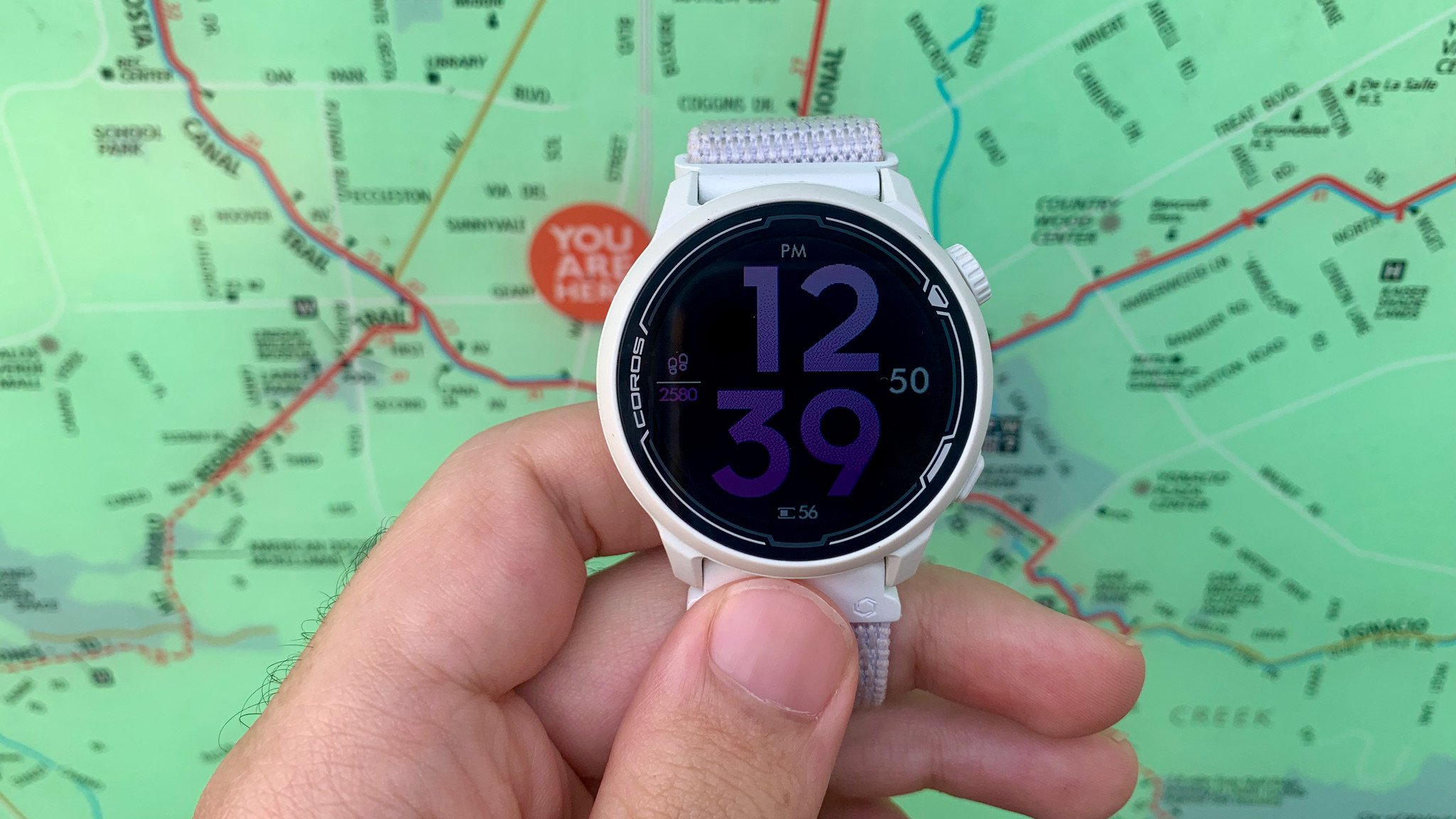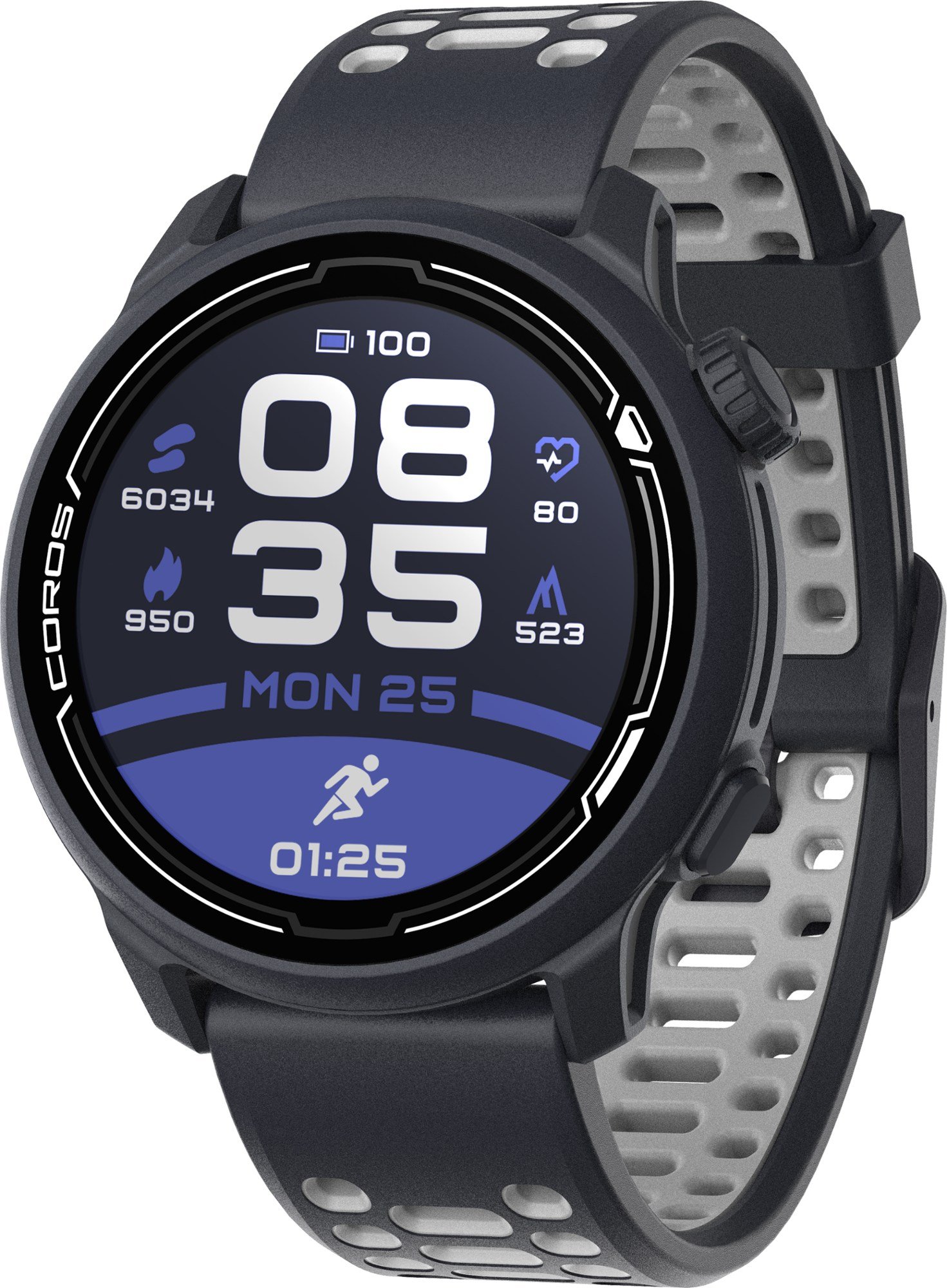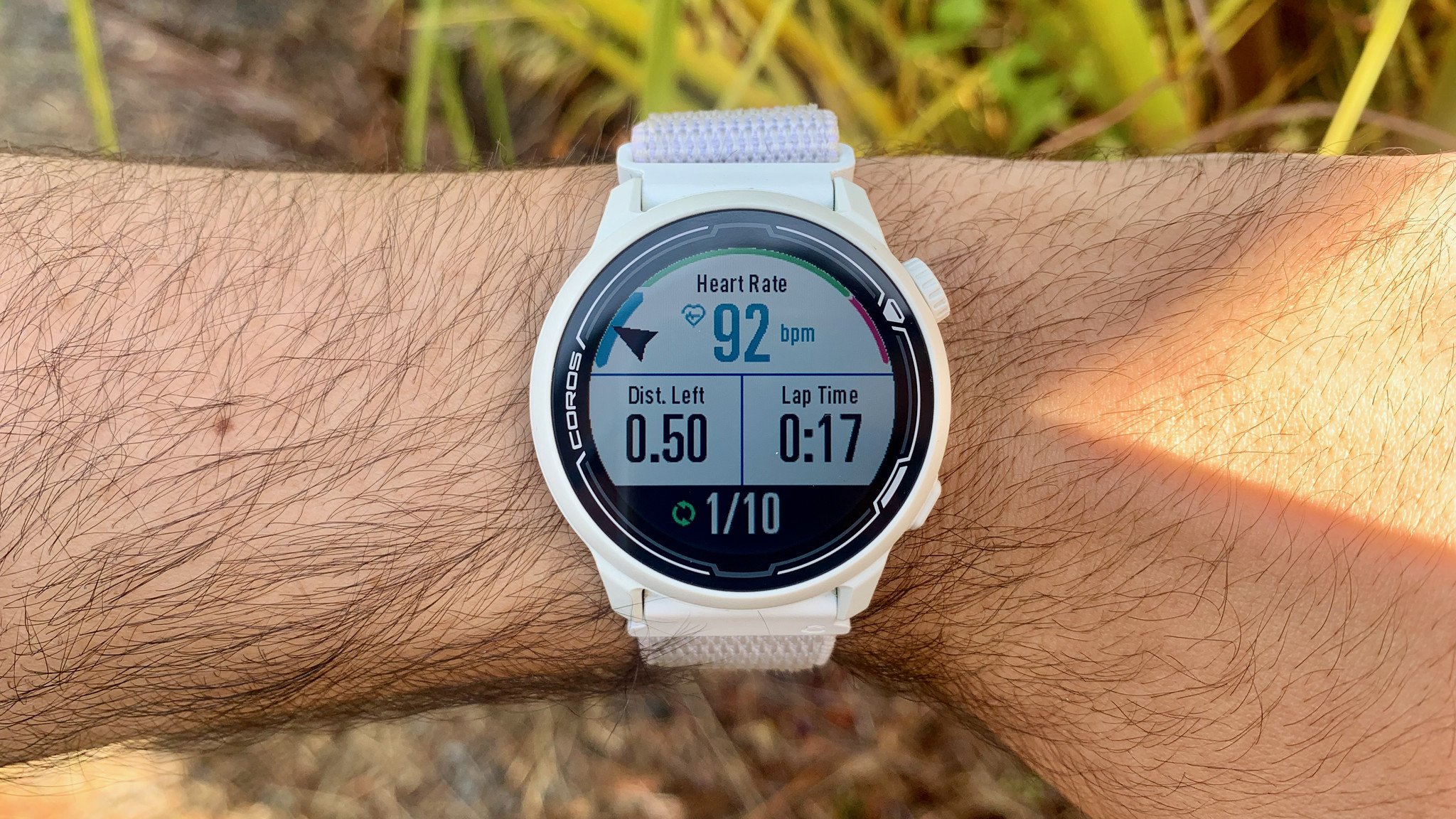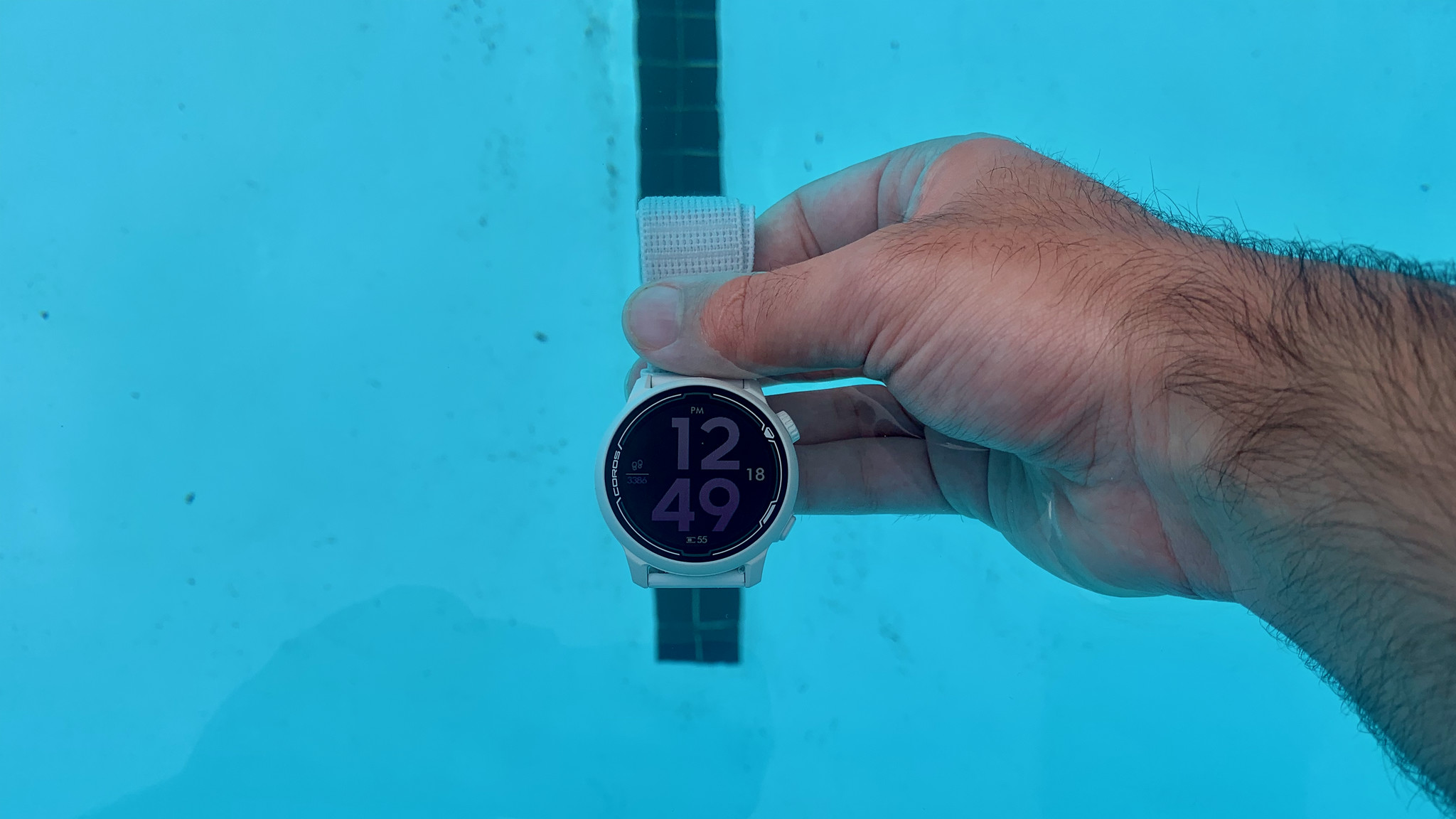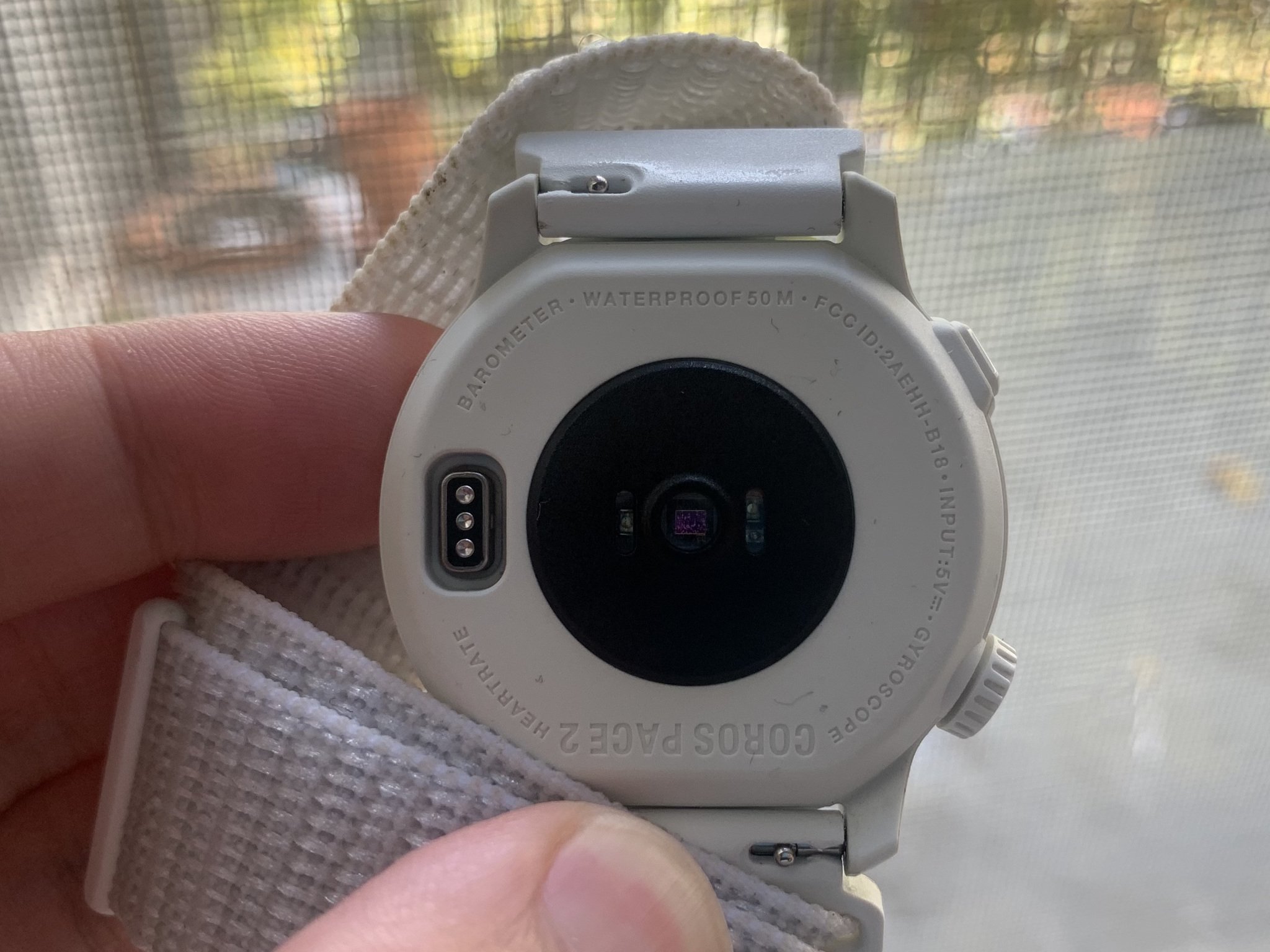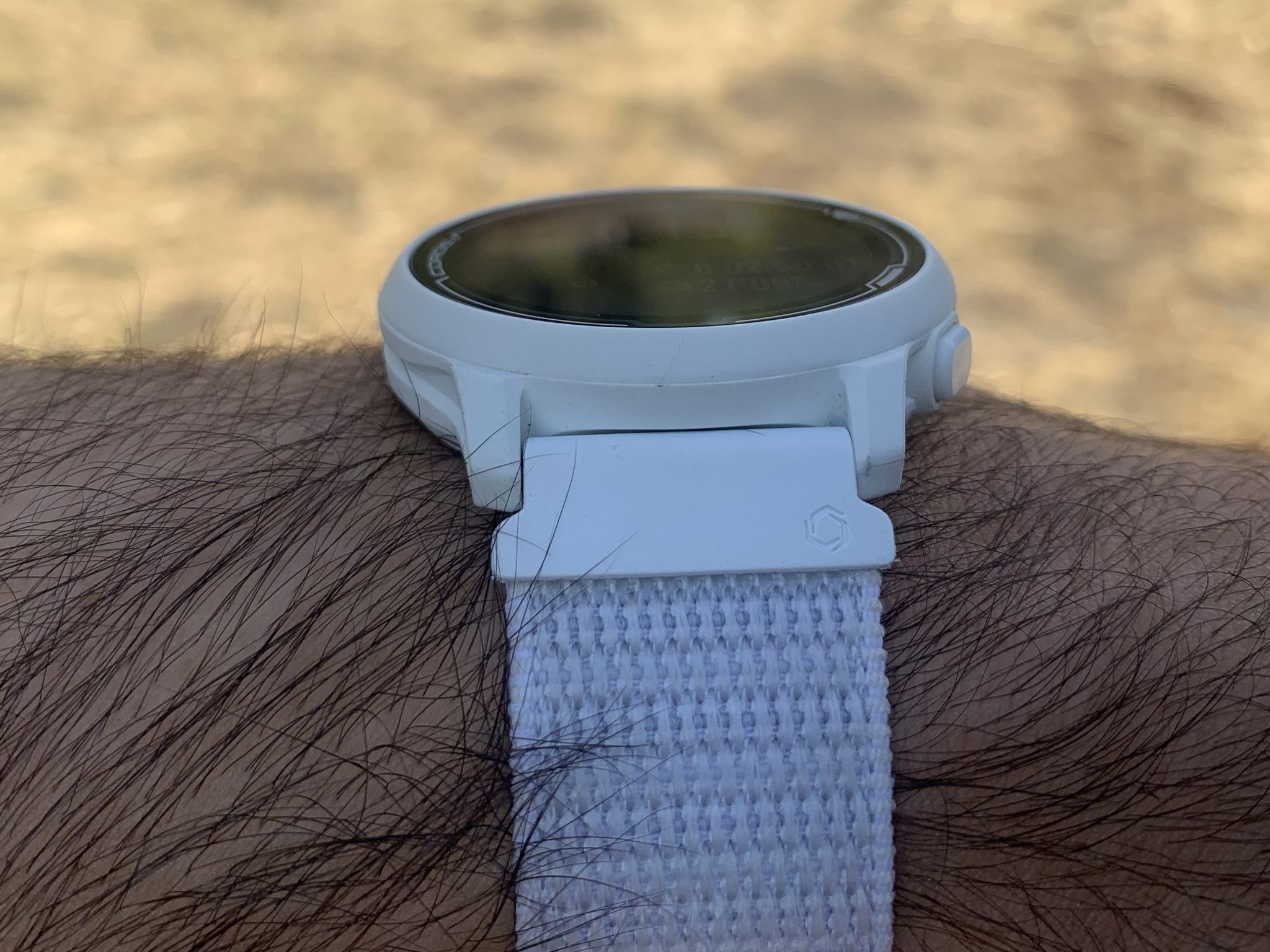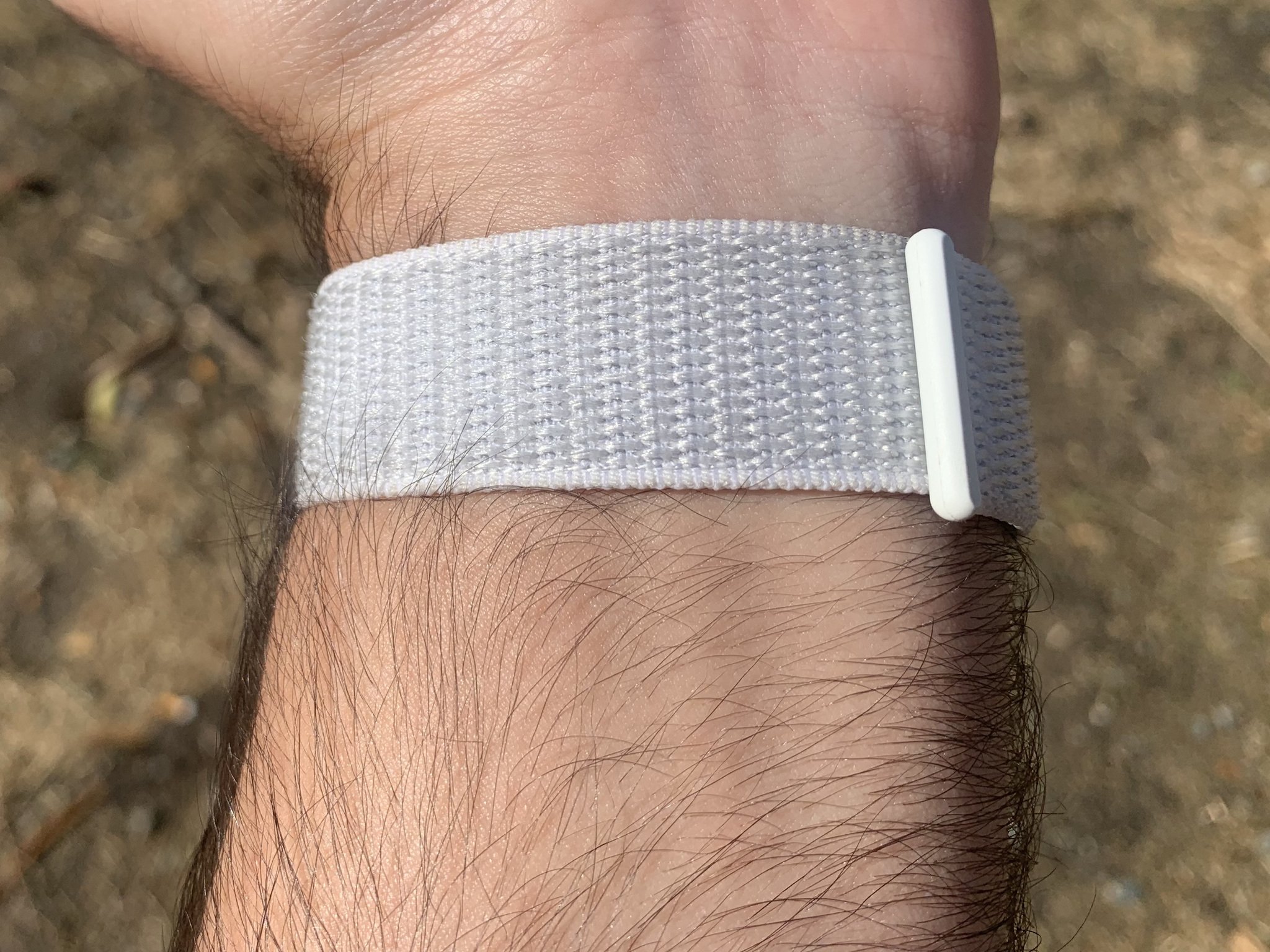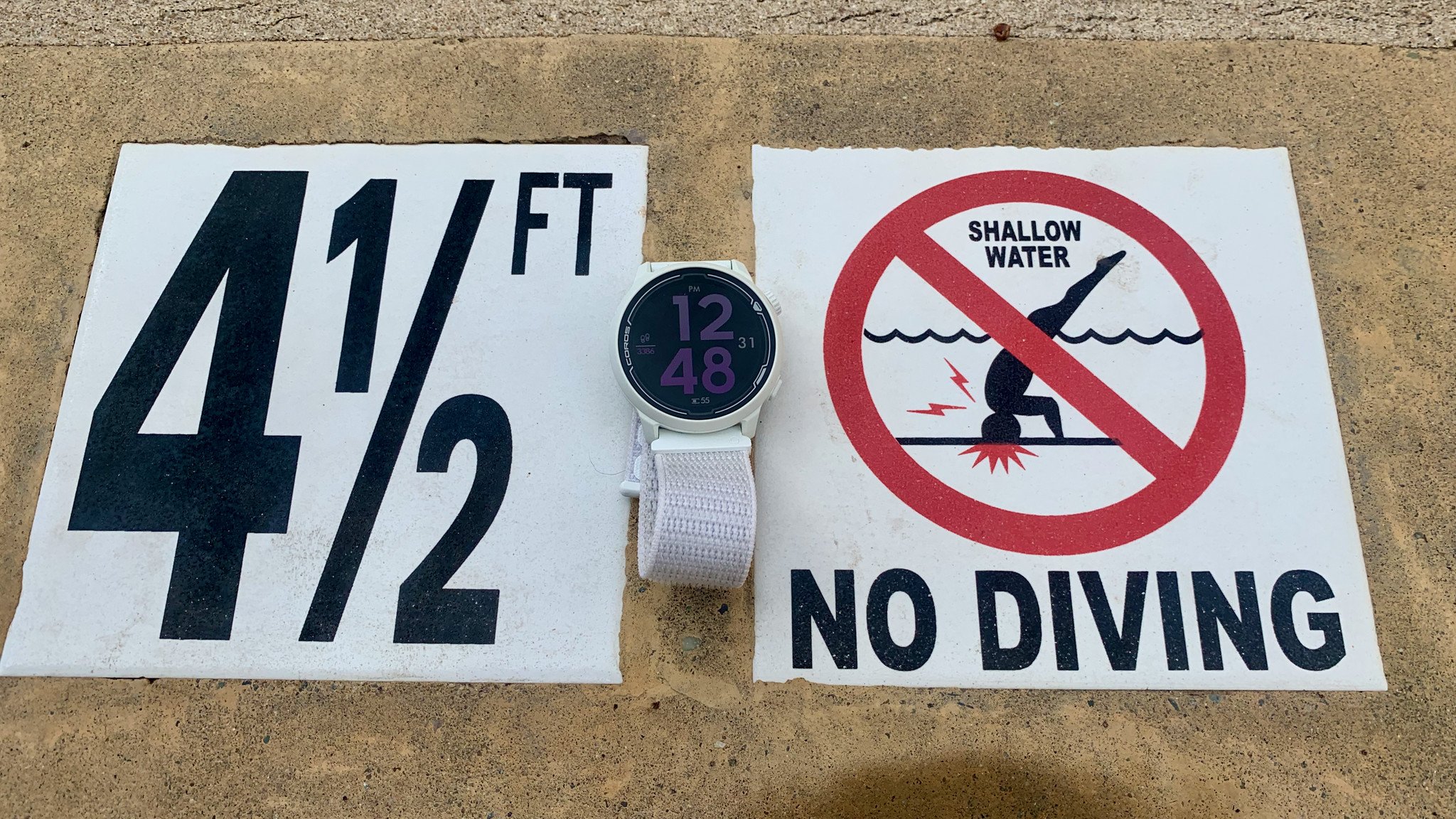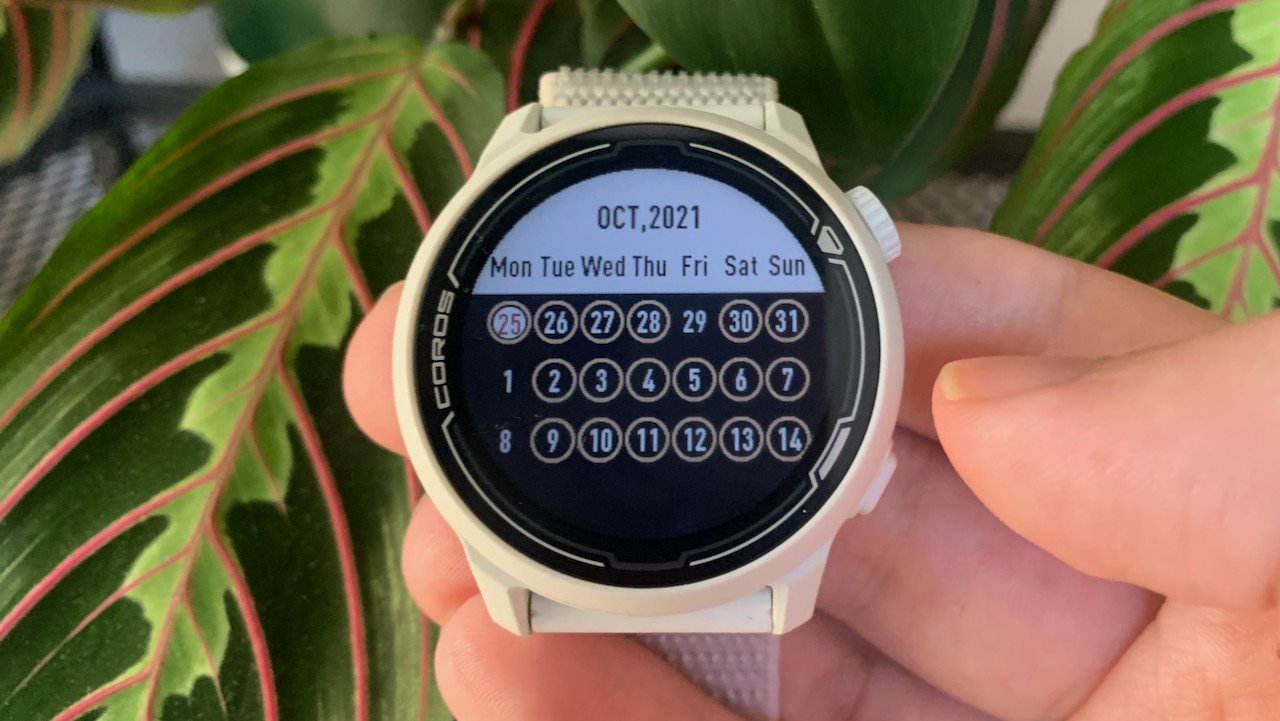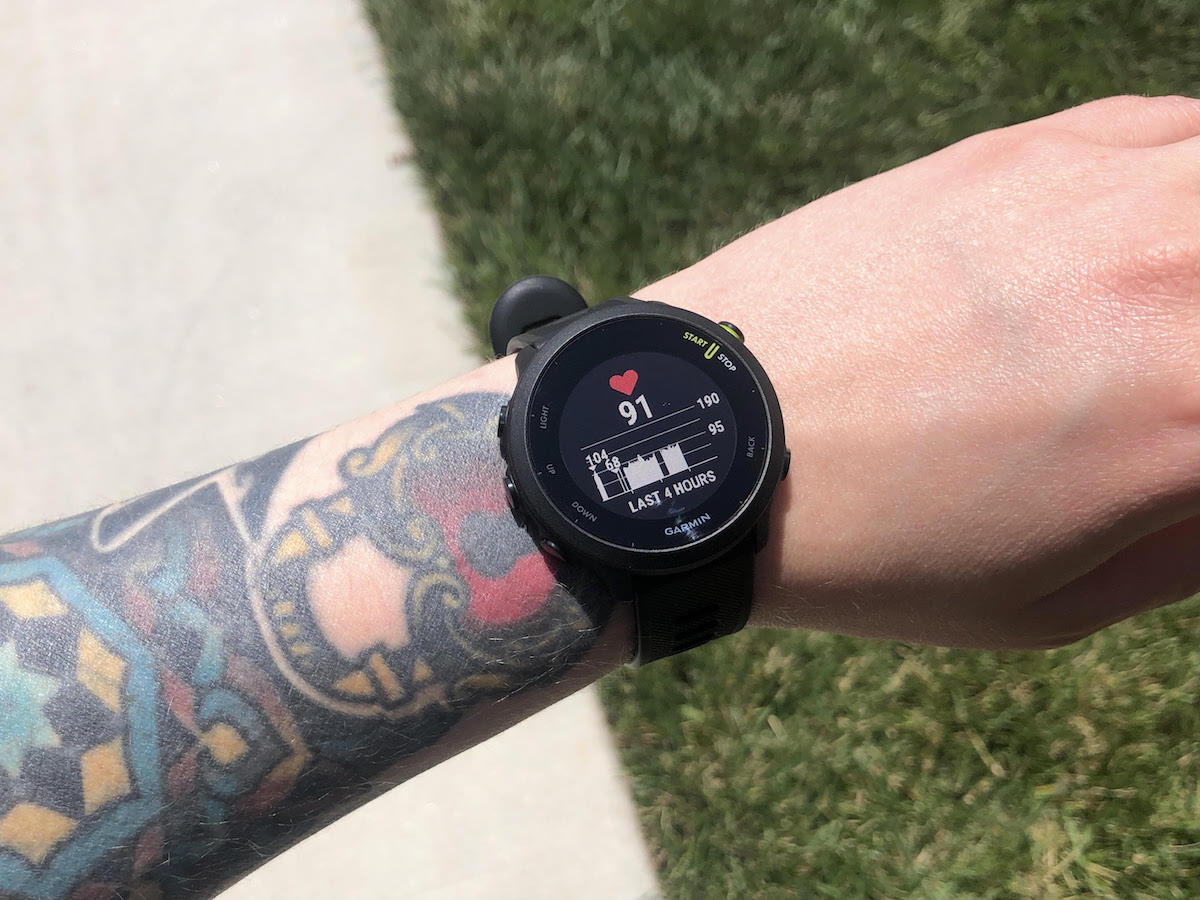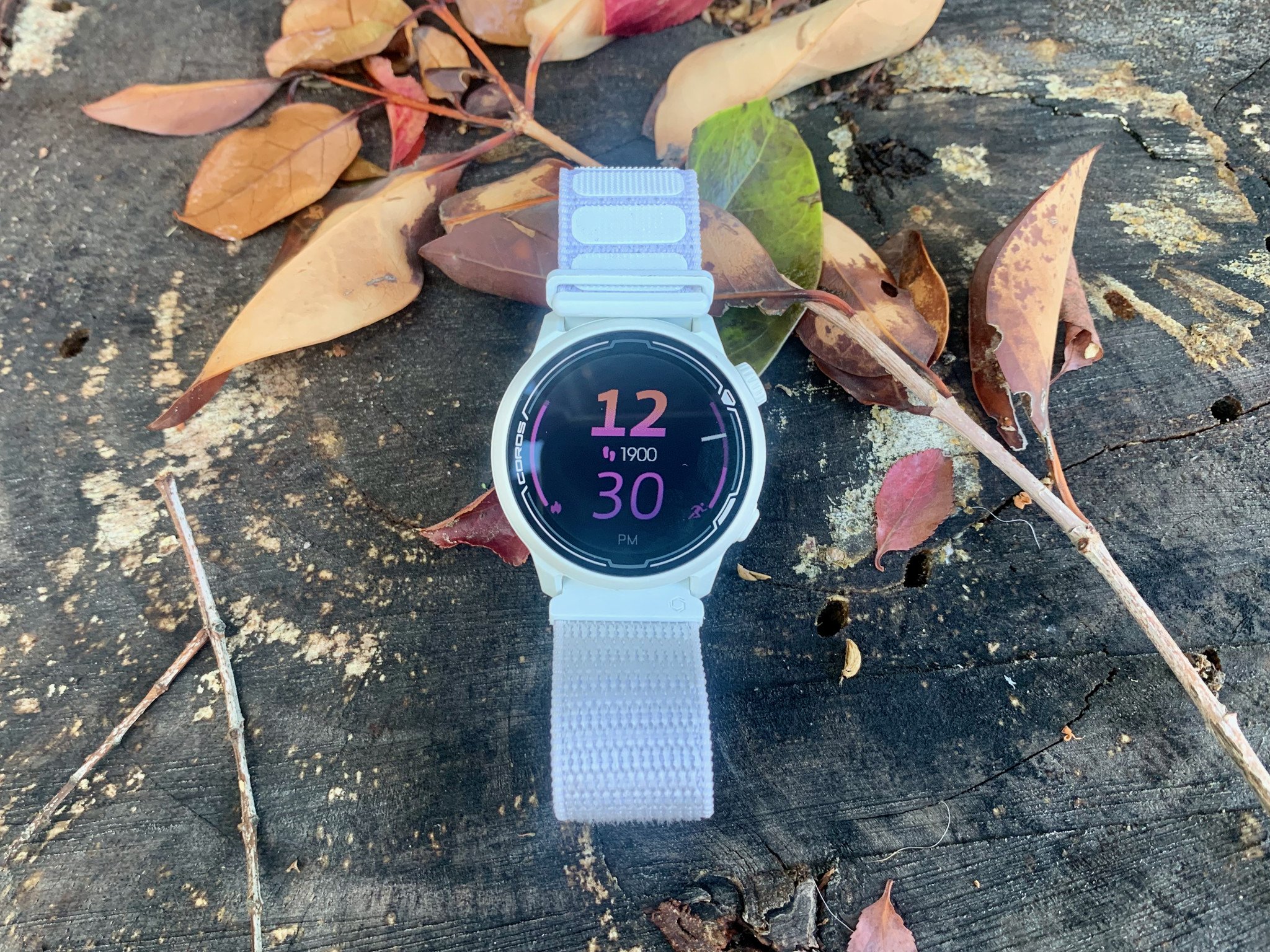30 hours of GPS activity and a 1-ounce design make the Pace 2 a proper workhorse.
Most hardcore runners, cyclists, and triathletes tend to stick with Garmin smartwatches; that brand gives you quality hardware, tons of metrics for various sports, suggested workouts based on your stats, and other intangibles. But Californian brand Coros has made waves in recent years, partnering with top ultramarathoners and mountain climbers to push its watches as rugged, long-lasting devices for "serious" athletes.
The Coros Pace 2 is a no-nonsense fitness smartwatch that's best for athletes who want to strap on a watch and then forget about it. Weighing 29g (1 ounce) with the nylon strap, the Pace 2 feels incredibly light on my wrist, making it perfect for long races or training sessions. Its epically long battery life — I have yet to recharge it after weeks of testing — also makes it well suited for active lifestyles.
An easy pick for one of the best running watches available today, the Coros Pace 2 lacks the style, colorful display, and lifestyle features of more casual watches; you won't be storing music or tapping to pay with it. But its core GPS and health tracking, plus the new EvoLab data tool for analyzing your running metrics without a subscription, make the Pace 2 worth buying to get serious about meeting your fitness goals.
Coros Pace 2
Bottom line: Looking for a smartwatch that will never die during a long race and won't feel like a burden on your wrist? Seriously consider the Coros Pace 2: its battery is one of the best we've tested, its controls are less frustrating to use than a touchscreen, and the free, auto-generated workout metrics will help you improve without hurting yourself.
The Good
- 1oz design feels near-weightless
- Free EvoLab workout metrics for serious athletes
- Weeks of battery life
- Two buttons make for easy navigation
- Downloadable or custom workouts and schedules on watch
- Decently bright, readable LCD display
The Bad
- No SpO2 sensor
- Nylon strap can be itchy, sweat absorbant
- Missing lifestyle tools like music storage, NFC
Coros Pace 2: Price and availability
The Coros Pace 2 originally launched in August 2020, costing $200/£200. You can find the watch on the Coros site, Amazon, and various sporting goods retailers like REI. The watch ships in various colors, including white, black, green, gold, and navy. There is also a special Eliud Kipchoge Edition watch for $250.
Each Pace 2 comes with either a nylon or silicone strap. You can purchase an official replacement 42mm band for $30. Coros's EvoLab tools are completely free in the Coros app, where other fitness apps would charge for a premium subscription.
Coros Pace 2: What athletes will love
Despite the smaller display and limited features, many runners choose a fitness tracker over a smartwatch because it won't weigh your wrist down as much. But at 29g — or 35g with the silicone band — the Coros Pace 2 smartwatch weighs the same as a narrow strip tracker like the Fitbit Charge 4. That should give you context for how light it'll feel on your wrist.
The Coros Pace 2 has a 1.2-inch 240x240 LCD display with 64 colors. For comparison, the Garmin Forerunner 55 — which has the same price tag, making it the best Garmin to weigh the Pace 2 against — has a 208x208 pixel display that can't show quite as much compact info. The Pace 2's LCD colors are muted but distinct, and its text has much less fuzziness around the edges than we saw on the 55. It's no AMOLED, but that means better battery life and a lighter feel.
The Coros Pace 2 has spoiled me thanks to its 30-hour battery and amazing power retention.
A GPS-powered workout on a typical smartwatch will burn through a ton of battery life, especially on longer runs. With the Coros Pace 2, I've become spoiled thanks to its 30 hours of GPS workout time. An hour-long run plus a cooldown period uses up maybe a few percentage points worth of battery, at most. When idly taking your heart rate and other health stats, the Pace 2 keeps chugging along without losing much power. If you typically only wear your running watch during runs, it can sit for weeks, literally, without a recharge and retain almost all of its power.
Daily athletes might need to plug the Pace 2 in every 7 to 10 days, but more casual folks will only need to do so a couple of times per month.
One other minor perk: the Coros Pace 2 recharges via a USB cable that plugs directly into a slot on the back. I've been using a Fitbit Sense recently, and its magnetic charger drives me crazy, sometimes only appearing to connect but not actually refueling my watch. I much prefer Coros's (and Garmin's) charger choice here.
Navigating the Pace 2's UI is straightforward thanks to its two buttons on the top-right and bottom-right of the watch. The top-right button is both button and knob; you turn it to unlock the device or navigate through menus, then tap it to select menu options or start a workout. The bottom button is your back button, though you can also hold it down to open the Settings/Apps menu.
Coros Pace 2 sacrifices fancier navigation for a more functional knob-based method.
Once you know how it works, menuing is a breeze. I've grown frustrated with watches dependant on touch or the accelerometer to turn on; sweat-soaked fingers or bright sunlight can have you tapping for several futile seconds trying to pause a workout or change the stats on screen. With the Coros Pace 2, one quick knob-turn is all you need to turn it on, then a few more twists to see other stats or a single back-tap to find the pause option. It sacrifices fancier navigation for a more functional knob-based method.
You'll find 17 core activity modes on the Coros Pace 2, focused on running, cycling, swimming (the Pace 2 has 5ATM water resistance), and gym workouts, plus a triathalon mode. That number falls short of the dozens found on more expensive Garmin models, but the Garmin Forerunner 55 has a comparable number of activities; it wins for yoga and pilates but lacks the triathalon feature.
My personal favorite is the Training mode: in the Coros app, you can create or import workouts with specific intervals, pacing, and warm-ups/cooldowns, then wirelessly upload them to the Training menu on your Pace 2. Your watch will show you the time remaining in each set and vibrate to let you know it's time to switch up your pace. You can also create a calendar-based training plan that you can view on your watch, checking to see how many miles or reps you're supposed to finish on a given day.
The newest Coros Pace 2 feature added in July 2021 is EvoLab, a "sports science program" that analyzes your running metrics to determine how well you perform in a workout relative to your usual execution. After a workout, it'll tell you whether your workload was "optimized" or too hard or soft for your regular fitness routine; and after tough races, it'll estimate how long you should wait until you go out again. It'll even estimate your current marathon pace; as someone currently training for a marathon, I appreciate seeing some metrics on how I'm doing.
Coros's EvoLab data gives you health metrics that other brands charge $10/month for.
This data is easily found on your watch as well as the Coros app. Scroll past the main menu, and you'll find your daily plan, running performance, fatigue, recovery window, and other metrics very easily. You can also view recent workouts and all the accompanying data in the History menu, something not every fitness smartwatch offers.
Best of all: while other brands like Fitbit charge a monthly subscription for these features, Coros offers it for free. Clearly, Coros is striving to hold its own against Garmin in providing detailed data for its athletes.
Coros put some little software touches into the Pace 2 that I really appreciate, too. When you "start" a workout, the watch asks you to wait while it ascertains your heart rate and GPS position, then buzzes your wrist asks if you're ready to start. I dislike how so many watches leave the burden on you to determine when the GPS has connected, leaving you staring at your screen. And if you pause a workout, Coros leaves the screen on until you restart, so you don't have to unlock the screen again; you just press a button, and you're off again.
Best of all, the Coros Pace 2 also seems to acquire a signal, sync with my phone, or download new workouts much faster than other watches; I'm talking ten seconds versus a minute or two with other smartwatches.
Coros Pace 2: What athletes will dislike
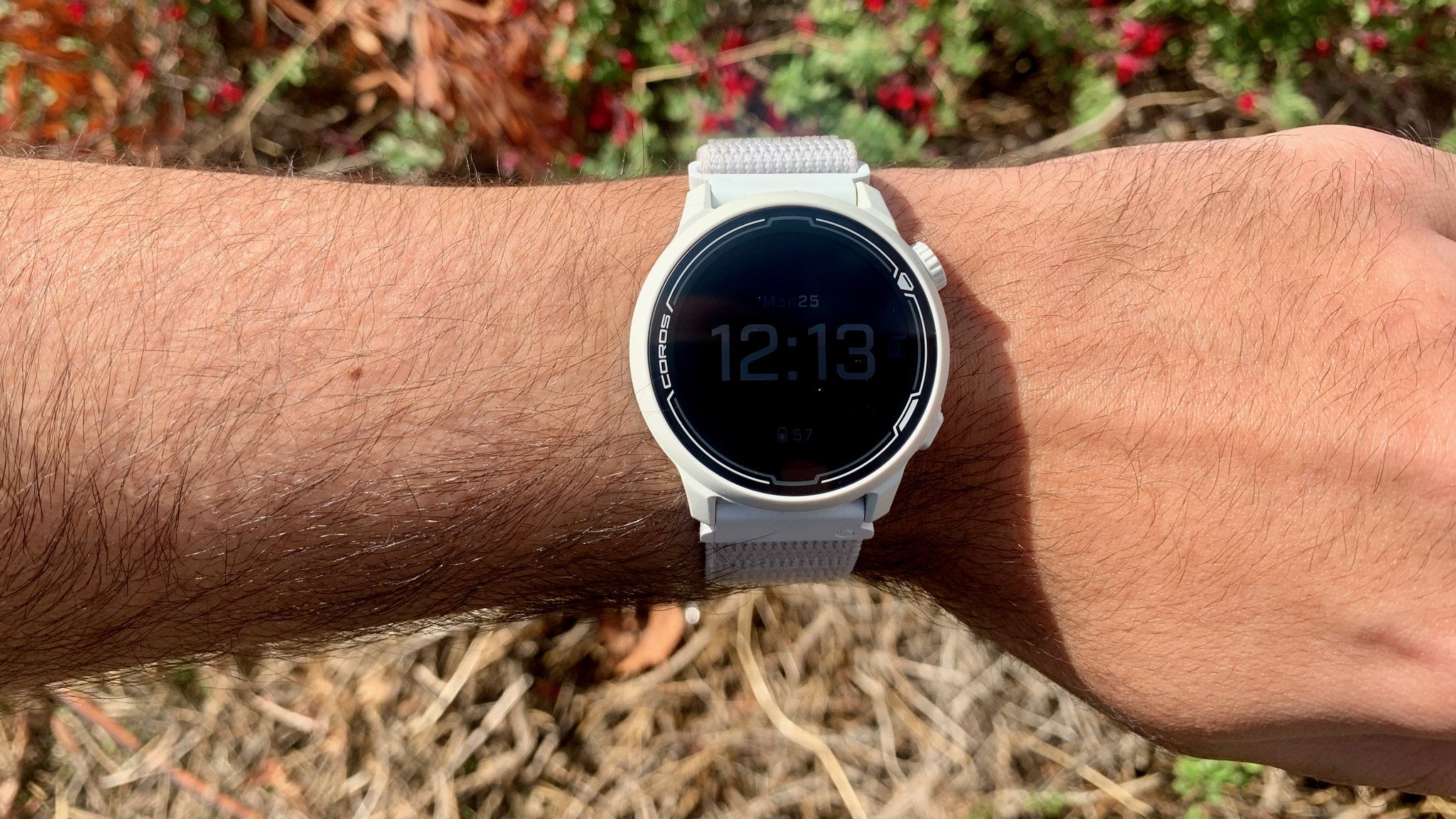 The Pace 2 display gets decently bright (it's more visible in direct sun than this picture suggests) but not as bright as any AMOLED.
The Pace 2 display gets decently bright (it's more visible in direct sun than this picture suggests) but not as bright as any AMOLED.
While the Coros Pace 2 has built-in GPS with GLONASS, an optical heart rate monitor, altimeter, accelerometer, gyroscope, and compass — all the core tools any smartwatch needs — it lacks a blood oxygen sensor or ECG. So if you're someone planning on running or cycling high-altitude races or want better HR accuracy to monitor for irregular heartbeats, you'll want to upgrade to a more expensive watch.
The nylon band keeps the Pace 2 lightweight...but it's a bit too sweat-absorbant.
The nylon band makes the Pace 2 feathery on my wrist in terms of weight, but not in texture. It's a little rough on my skin, and it also absorbs sweat and retains it after a run or swim, making me less likely to keep wearing it post-workout. I'm planning on continuing to use the Coros Pace 2, but I plan to buy the silicone band and see if I prefer it, even if it weighs 0.2oz more. I'll update this review once I've compared the two experiences.
If you're someone used to wearing a lifestyle watch that doubles as a fitness watch, the Coros Pace 2 will be woefully inadequate. It lacks NFC for payments, built-in music storage (or even music controls), third-party apps, a voice assistant, call answering, and so on. You will see calls and notifications as they come in, but not much else.
Personally, I could care less about most of these features during a run, and I much prefer a watch that foregoes all this for better battery performance. But some of you will want to steer clear or buy a separate watch for day-to-day wearing.
My only real complaint is that the watch doesn't come with a proper manual. It has a quick start guide for turning the Pace 2 on, but after that, you're on your own. Initially, I didn't understand that the lock indicated I needed to turn the knob and was stuck; later, I couldn't initially find the settings because I didn't know the button shortcut for it. Coros does have some useful help guides and YouTube tutorials online, but I had to proactively search for them.
Coros Pace 2: Competition
As I've mentioned, the Garmin Forerunner 55 is the obvious competitor to the Coros Pace 2. Also designed as a baseline smartwatch with basic sensors and activity modes and backed by Garmin's wealth of free athletic data, the Forerunner 55 costs $200 as well. Compared to the Pace 2, it lacks an altimeter as well as the SpO2 sensor, it weighs slightly more at 37g, and it's only rated to last through 20 hours of GPS activity. It has five buttons, which could either make it easier to navigate or just overcomplicate things. The biggest point in the 55's favor is Garmin's auto-generated workouts based on your workout data.
If you're looking for something even more lightweight than the Coros Pace 2, the Fitbit Charge 5 only measures about half an ounce, making it even more inconspicuous on your arm. Plus, it supports NFC and music controls, and its AMOLED display (while tiny) is brighter and more colorful. But thin touchscreens like these can be obnoxious to navigate on, and the point of the Pace 2 is to offer something portable without compromising the user experience.
Coros Pace 2: Should you buy it?
You should buy this if...
- You hate having to constantly recharge your fitness smartwatch
- You're a solitary athlete who needs tech to remind you when to push or chill
- You don't need a watch that doubles as a fashion statement
You shouldn't buy this if...
- You want built-in music storage or SpO2 readings
- The Pace 2 doesn't track your sport of choice
- You don't need advanced workout metrics
More expensive fitness watches will get you tools like topographical maps, solar recharging, rugged cases, and other tools for hardcore users. More expensive smartwatches from Apple or Samsung will win for daily use features and style, even if you have to recharge them every day. But the Coros Pace 2 hits the sweet spot for semi-serious athletes looking to get or stay fit for a pretty reasonable price.
Even if the Coros Pace 2 isn't much to look at, it does what athletes need it to do: sit quietly and lightly on your wrist, track your performance, and warn you when you're pushing too hard or slacking off. Plus, even if you're running a 100-miler for 15 to 20 hours, a fully charged Pace 2 should last 'till the end with energy to spare.
If you want to buy yourself or a loved one a smartwatch that'll help them hit their fitness goals, the Coros Pace 2 is a solid option that lives up to the competition.
Coros Pace 2
Bottom line: A fitness smartwatch with simple controls, near-endless battery life, a compact design that won't swallow or burden your wrist, the Coros Pace 2 is an excellent purchase for runners, swimmers, and cyclists.
Source: androidcentral
